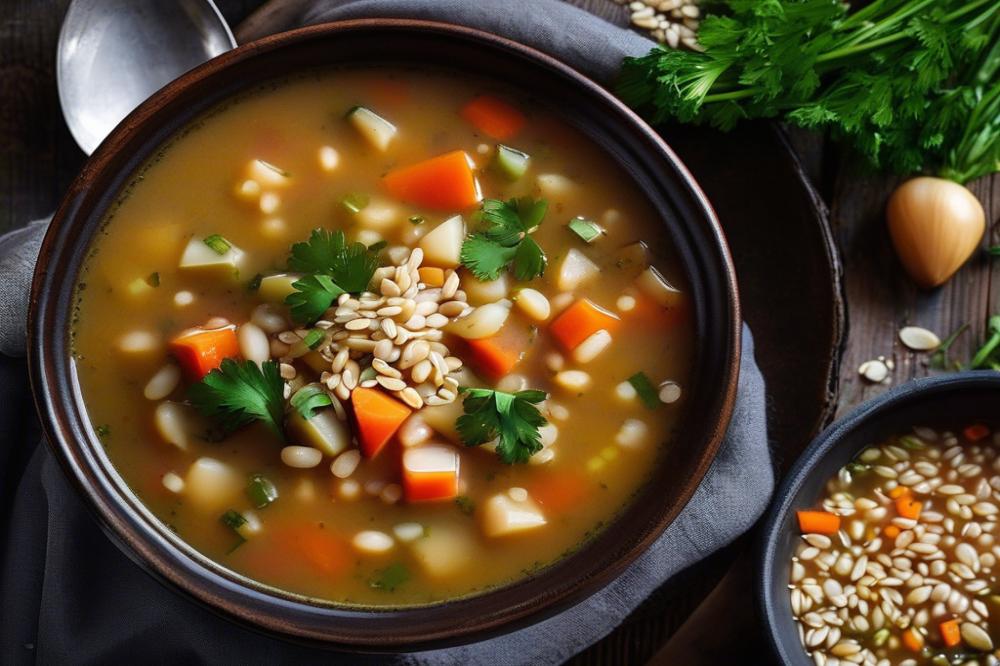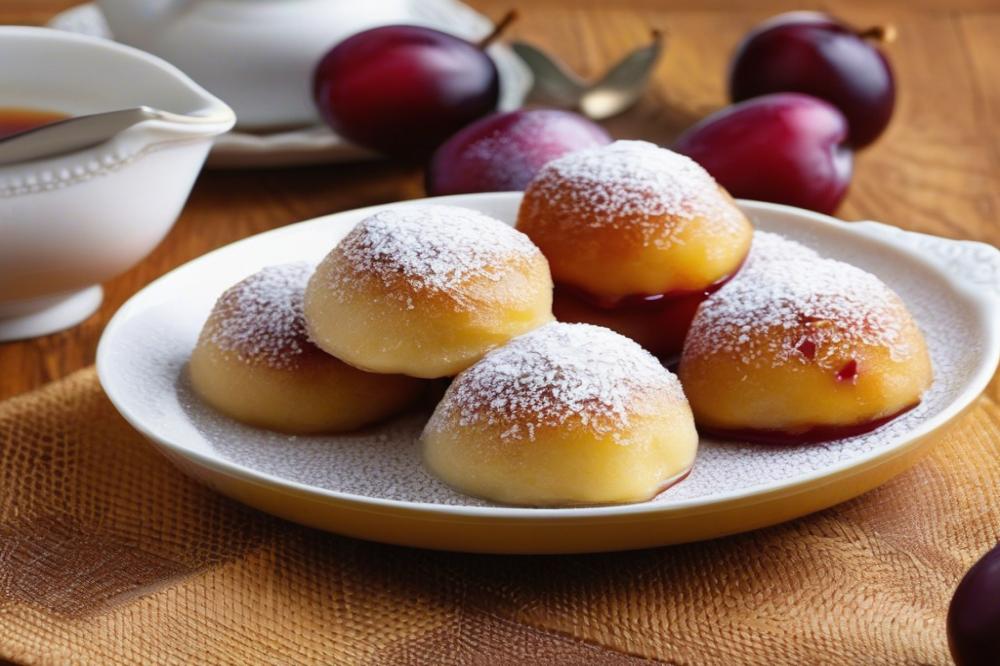Introduction
recipebix.com/the-classic-recipe-for-bacalhau-com-natas-salted-cod-in-cream-sauce”>Leite Creme is a beloved traditional dessert in Portugal. This creamy custard showcases the simple yet rich flavors that define Portuguese cuisine. At its heart, it combines the smoothness of cooked egg mixtures with the sweetness of sugar. Many enjoy this dish not just for its taste but also for its connection to Portuguese culture, where it is often served during family gatherings and festive occasions.
Historically, this delectable treat dates back centuries. It is often associated with special family recipes passed down through generations. Each region in Portugal may have its own variation, highlighting local ingredients and cooking styles. Events celebrating this custard often reflect the deep appreciation for culinary traditions within Portuguese families.
A comparison with French crème brûlée reveals some intriguing differences. While both desserts share a custard-like base, their toppings separate them distinctly. Crème brûlée features a hard caramelized sugar shell, providing a delightful crunch. In contrast, the top of Leite Creme is typically sprinkled with cinnamon and sugar, giving it a warm, aromatic note. Both are delicious, but the unique traditions behind each recipe highlight the rich diversity in dessert-making.
Preparing this sweet dish is surprisingly easy. Many enjoy making it at home as a comforting project in the kitchen. Cooking allows families to bond over the preparation, whether sharing tips or tasting the finished product. In Portugal, food plays an essential role in uniting people, and Leite Creme exemplifies this beautifully.
The Essence of Leite Creme

Leite Creme is a classic dessert in Portuguese cuisine. This silky custard has a significant place in the hearts of many. It stands out for its creamy texture and delightful flavor. The simplicity of the recipe allows home cooks to embrace traditional cooking methods.
Texture plays a vital role in making Leite Creme memorable. It feels rich and smooth. Each spoonful melts in your mouth, delivering a comforting experience. The flavor is equally appealing, blending hints of vanilla with a slight zest. Sugar provides sweetness while the caramel topping adds a delightful crunch.
Key differences exist between Leite Creme and French crème brûlée. The custard base for the Portuguese version is often thicker. While both desserts feature a sugar crust, the caramelization process can vary. A torch is commonly used for crème brûlée in France, while Leite Creme often relies on the oven for a more gentle finish. This gives each a distinct character to savor.
This unique dessert reflects the culinary traditions of Portugal. Preparing it at home is easy and rewarding. The blend of flavors makes it a favorite among food lovers. Its comforting nature also makes it an ideal treat for gatherings and family meals. The appeal of this dessert goes beyond just taste; it embodies the essence of Portuguese hospitality and warmth.
Ingredients and Method

List of Ingredients
To create this delightful dessert, gather the following ingredients:
- Milk – 1 liter
- Sugar – 200 grams
- Egg yolks – 4
- Cornstarch – 50 grams
- Lemon peel – from 1 lemon
- Cinnamon stick – 1
- Vanilla extract – 1 teaspoon
Method of Preparation
First, you’ll need to prepare the ingredients. Start by heating the milk in a saucepan over medium heat. As it warms up, add the lemon peel and the cinnamon stick for flavor.
In a separate bowl, mix the egg yolks, sugar, and cornstarch. Whisk these together until the texture becomes smooth. This mixture forms the base of your custard.
When the milk is hot but not boiling, slowly pour it into the egg mixture. Whisk continuously to avoid cooking the eggs. After blending, return this to the saucepan.
Cook the mixture on low heat, stirring constantly, until it thickens to a custard-like consistency. Avoid high heat, as it may cause curdling. Remove it from the heat and stir in the vanilla extract.
Pour the custard into ramekins or a single dish. Let it cool down slightly before refrigerating. Allow it to chill for at least three hours. This cooling phase is crucial for the texture.
Cooking Tips and Tricks
To achieve that perfect creamy texture, stirring continuously is essential. If you want a smoother custard, you can strain the mixture before pouring it into the serving dishes.
For added flavor, consider infusing additional spices such as nutmeg or ginger. You might even experiment with different citrus peels for a unique twist.
When ready to serve, sprinkle sugar on top of each custard. Use a kitchen torch to melt and caramelize the sugar into a crisp layer. If you don’t have a torch, placing the ramekins under a broiler for a short time can also work well.
Patience is key. Allow the sugar to cool for a few moments before diving in, as that caramel layer can get really hot. Enjoy this traditional recipe from Portugal, and impress your friends with your culinary skills!
Nutritional Information

When diving into the ingredients of this traditional dessert, understanding the caloric breakdown is essential. Each ingredient in this recipe contributes differently to the overall nutritional profile.
Caloric Breakdown of Each Ingredient
Sugar is a significant component. One cup of sugar contains about 774 calories. This part of the recipe provides sweetness but lacks nutrients. Egg yolks are also essential; each yolk has around 55 calories. They add richness and help create a creamy custard. Whole milk, often used in preparing the custard, adds about 150 calories per cup. Finally, heavy cream is used for its velvety texture, contributing about 800 calories for one cup. Collectively, these ingredients make a delightful but calorie-rich dish.
Discussion on Macros
Now, let’s break down the macros. This dessert is high in carbohydrates primarily from the sugar used. Each serving can contain upwards of 20 grams of carbohydrates. In terms of fats, heavy cream provides a significant contribution. It contains around 88 grams of fat per cup, making this custard quite indulgent. As for proteins, egg yolks add some value, with about 12 grams per cup. Overall, the dessert exhibits a balance that leans heavily on carbs and fats without much protein.
Potential Variations for Healthier Alternatives
Making adjustments for a healthier version is possible. Consider using less sugar or a sugar substitute, which can significantly lower calories. Almond milk could replace whole milk. It’s lower in calories and adds a unique flavor twist. Another option is to use low-fat cream instead of heavy cream. This can decrease the fat content while still providing creaminess. Adding fresh fruit can also enhance both flavor and nutrients, turning this sweet recipe into a more balanced food choice.
Experimenting with these variations allows you to enjoy this custard while managing dietary goals. Making slight changes can lead to a delicious result that fits different lifestyles. Enjoy the process of cooking and taste-testing!
Exploring the Caramelization Process

The caramel layer is a key feature of the Portuguese dessert. Without it, the dish lacks that exciting contrast in texture and flavor. Caramel provides a sweet, slightly bitter note that balances the creamy custard underneath. Cooking sugar to the right temperature transforms it from a simple ingredient to a delightful topping. This delicious layer adds an appealing crunch, enhancing the overall experience of this traditional recipe.
Importance of Caramel in Leite Creme
In any recipe, details matter. The caramel in Leite Creme serves more than just decoration. As it hardens, it forms a glassy crust that you crack open with a spoon. Each bite should bring together the smooth sweetness of custard and the thrilling crunch of the caramel. Both flavors harmonize, creating a delightful explosion of taste. In essence, the caramel is what makes this dessert truly memorable.
Techniques for Achieving the Perfect Caramel Layer
Making the perfect caramel can seem challenging. Start by placing sugar in a heavy-bottomed pan. Keep the heat low to medium; this helps the sugar melt evenly. Stirring can help prevent clumping, but be careful not to overdo it. Once the sugar begins to melt, resist the urge to stir. Instead, gently swirl the pan. Observing the color change is thrilling. Aim for a deep, amber color. When the desired shade appears, quickly pour it over the custard. Timing is crucial; the caramel will keep cooking even after it is off the heat.
Safety Tips When Working with Sugar
It is important to keep safety in mind while cooking with caramel. Hot sugar can cause severe burns. Always use an appropriate pan with a long handle to minimize risks. Keep a bowl of cold water nearby. In case of burns, this can provide relief. Wearing long sleeves can also protect your skin. Finally, do not leave the cooking sugar unattended. It can go from perfect to burnt in a matter of seconds. Paying attention while working ensures a successful cooking experience.
Serving and Pairing Suggestions
Ideal Ways to Serve Leite Creme
Leite Creme can be served in elegant ramekins, which elevate its visual appeal. After removing it from the fridge, torch the sugar until it forms a rich caramel crust. This crispy top contrasts beautifully with the creamy custard beneath. When plating, consider garnishing with fresh mint or berries. They add colors and freshness to the presentation. A sprinkle of cinnamon can also enhance its flavor and offer a nod to traditional cooking styles.
Pairing Options with Wine or Coffee
Pairing this dessert with a sweet dessert wine like Port can take the experience to new heights. The rich flavors of the wine complement the custard nicely. For those who prefer coffee, a bold espresso can also work wonders. Its strong flavor cuts through the creaminess, creating a balanced finish. Another option is to serve it alongside a light Moscato, which offers a lovely contrast to the sweetness of the sugar and caramel.
Presentation Tips for a Traditional Dessert Experience
Presentation matters when serving this classic dish. Use vintage dessert plates to evoke a sense of tradition. Placing a few delicate edible flowers on the plate can add an artistic touch. Additionally, serving the custard at a slightly chilled temperature enhances its smooth texture. Consider a rustic wooden board for serving, providing an inviting atmosphere. Ultimately, a simple but elegant setup can make an effortless yet impressive display for your guests while savoring this delightful food from Portugal.
Final Thoughts on a Traditional Delight
Leite Creme holds a special place in Portuguese cuisine, symbolizing comfort and celebration. This dessert has been enjoyed for generations, often making an appearance at family gatherings and festive occasions. Its velvety texture and caramelized top create a delightful contrast, evoking fond memories for many. You can easily appreciate how it captures the essence of tradition in every bite.
Trying your hand at this simple yet captivating recipe can be a rewarding experience. Cooking offers a unique opportunity to connect with heritage, and preparing this classic dish is no exception. With just a few ingredients, you can create something truly special. Gathering family or friends to share the result can turn the cooking process into a joyful event. Everyone will appreciate the deliciousness that comes from crafting it yourself.
Embracing traditional recipes from Portugal opens doors to rich culinary experiences. They tell stories of culture and history that can be passed down. When you explore dishes like this, you engage with a world full of flavors and aromas. Enjoy the journey of creating and savoring something that connects you to a vast and vibrant heritage. Each preparation may bring a new discovery, making the adventure all the more exciting.



